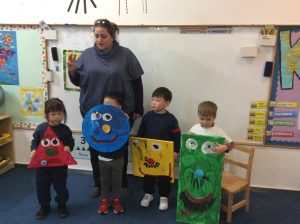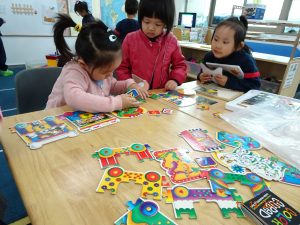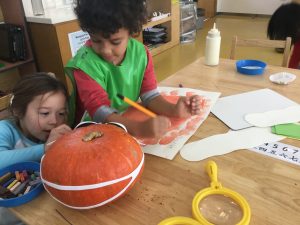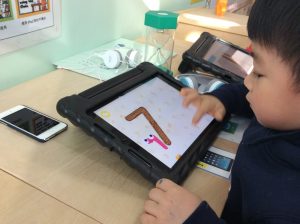Written by Veronica Martin (ECE Coordinator)


Shapes, numbers, addition, subtraction, big and small so many different mathematical terms you can hear as you wander around the ECE building. As the children play and have fun they are also cementing strong mathematical concepts they will need as they grow.
Imagine a child building a bridge to drive the car over, a child waiting their turn at the snakes and ladders game or a child painting a butterfly. All these play activities are grounded in mathematical ability, balancing the blocks and making them even to allow a bridge to stand, or knowing whose turn is next or how many moves you need when the dice has been thrown. Butterflies are symmetrical, and the children demonstrate this understanding in their paintings.


When does a child understand that numbers are not just a nice rhythm but are a product?
Many children can count higher than 20, when you say the numbers out loud it becomes a rhythm, 1,2,3,4,5… Using toys and real concrete items the Teachers aim to help all children to understand that a number is a product. If you have 4 cars, 4 balls, or 4 friends, the number 4 is always the same. Reinforcing these types of messages in many different ways is what adds to a child’s understanding of different mathematical concepts.


Exploring shapes and measuring items in many different forms builds mathematical concepts in the play area, whether inside or outside. Children measure with rulers or tapes and mark down the measurement, then they may discuss with their friends which measurement is the biggest or smallest. This is a simple activity but one that encourages children to use mathematical language in their daily learning. All children are encouraged to explore shapes in songs, what they see in their environment and what they can create themselves. When children are encouraged to learn using all their five senses, then the learning is more likely to be cemented within their brains, allowing them to slowly build upon each interaction to form a strong foundation in Mathematics.

